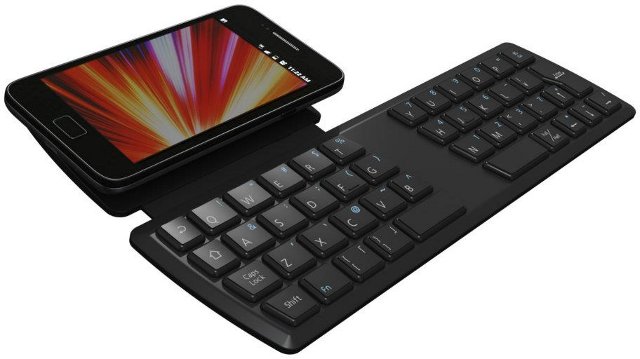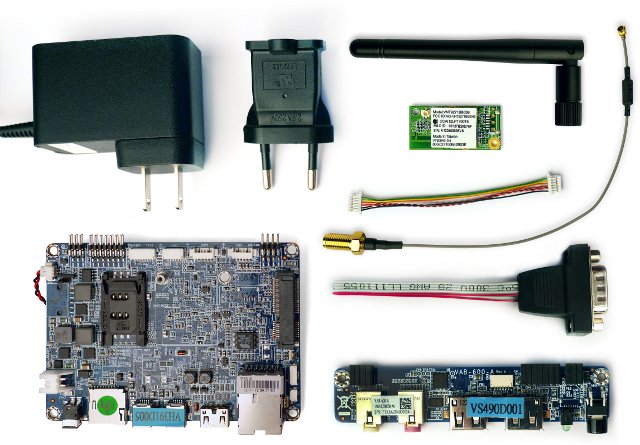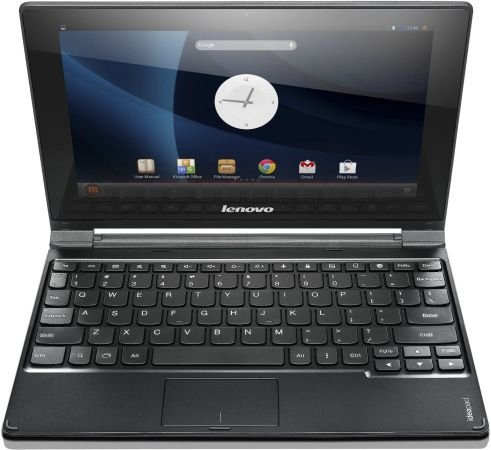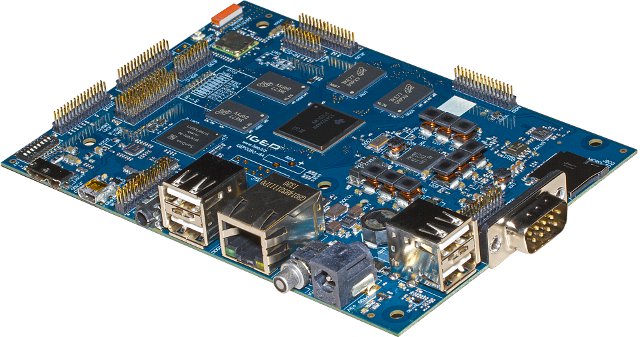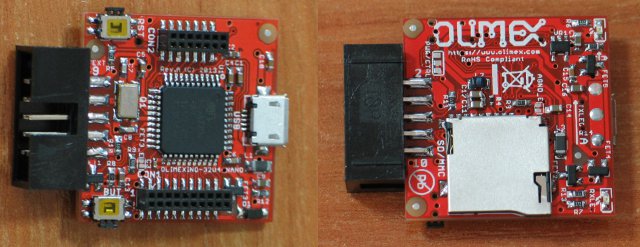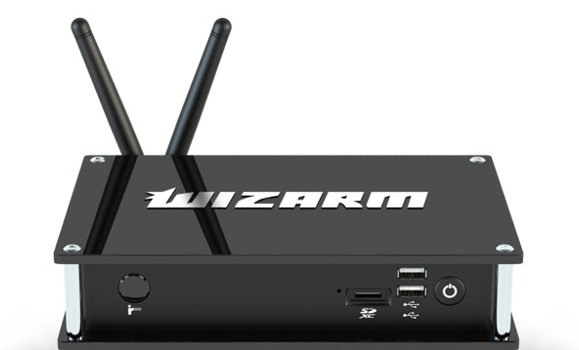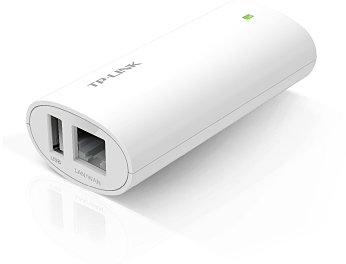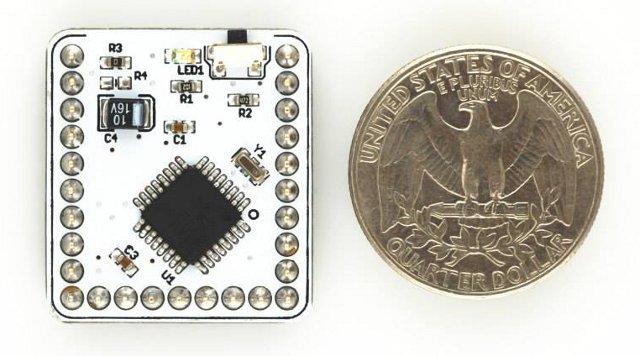It’s pretty easy to find Bluetooth keyboards if you want to a keyboard to type more easily and faster on your phone. They have two small inconveniences however: they need to be paired, and need to be recharged. The first one is not really a problem, but the second can be. If your phone supports NFC, you can now get One2Touch Softpad C1 or S2 wireless keyboard using NFC technology. These do not require pairing, nor charging (but uses CR2025 batteries). Softpad S1 is similar to C1, expect there’s space in the middle of the keyboard to insert your phone. S1 has recently been (quickly) reviewed by Android Central. To make the keyboard work with your Android smartphone, you’ll need to download the drivers from Google Play, and you’re ready to go. You can watch the video below for some of the use cases with Softpad C1. I could not […]
VIA Announces $99 Springboard Platform for Android and Linux Development
Back in May 2013, VIA unveiled VAB-600 Pico-ITX board powered by WonderMedia WM8950 with an ARM Cortex A9 processor @ 800 MHz and a Mali-400 GPU. At the time they provided a starter kit with a 7″ display. The company has now announced the VIA Springboard Platform based on VAB-600 that is available without Wi-Fi for $99 or with Wi-Fi for $129. Here are the items included in the kits: VAB-600 Pico-ITX board with WM8950, 1GB DDR3 SDRAM, 4GB eMMC Flash memory and microSD slot. See VAB-600 post for detailed specifications. VIA VAB-600-A I/O extender card: 1 x Line-Out jack 1 x Mic-In jack 2 x USB 2.0 A-type ports 1 x Suspend LED power indicator 1 x Power On/Off button 3 x board-to-board connectors 1 x USB board-to-board connector VIA VNT9271 Springboard USB WiFi module (Wi-Fi Kit only) – Supports IEEE 802.11b/g/n standards and 802.11e WiFi Multimedia (WMM). Based […]
Lenovo A10 Android Laptop is Powered by Rockchip RK3188
Lenovo has recently announced the Lenovo A10, an Android 4.2 netbook featuring a 10″ touchscreen display, and powered by Rockchip RK3188 quad core ARM Cortex-A9 processor coupled with 2GB RAM, and up to 32GB storage. Here are the specifications of this laptop: SoC – Rockchip RK3188 quad-core Cortex A9 processor System Memory – 2GB RAM Storage – Up to 32GB storage + microSD card slot Display – 10.1″, 1366 x 768 display with 10-point multitouch Video Output – HDMI port USB – 2x USB 2.0 ports Webcam – 0.3MP webcam Audio – Stereo speakers Battery – Up to 9 hours of video playback Dimensions – 17.3mm maximum thickness Weight – Less than 1kg The screen can be flipped around 300 degrees so that the device can be used in “laptop mode” or “stand mode”. In “laptop mode”, the company has designed a customized user interface, with an app launcher, task […]
ISEE Introduces IGEPv5 Board Powered by TI OMAP5432 Processor
ISEE made a call to developers late 2012, asking them what features they’d like for an OMAP5 board. IGEPv5 board is now nearly completed, and people can register their interest to receive the development board in January 2014. IGEPv5 Specifications: SoC – Texas Instruments OMAP5432 dual core Cortex A15 up to 2GHz with POWERVR SGX544 dual-core GPU, and TMS320DMC64x DSP System Memory – 2GB DDR3 RAM expandable to 4GB Storage – Up to 32GB eMMC i-NAND, microSD socket, and mSATA2.0 Interface Connectivity: Ethernet controller: 1 x 10/100/1000Mbps Gigabit Ethernet PHY controler (RJ45) Wifi: 802.11 b/g/n Bluetooth v4.0 Antenna: Internal Wifi/BT Antenna USB – 1 x USB 3.0 OTG (miniAB receptable), 4 x USB 2.0 Host (Type A receptable) Video – 1 x microHDMI (Video + Audio) Audio – 1 x Stereo Audio In (Stereo minijack), 1 x Stereo Audio Out (Stereo minijack) Debugging – DEBUG SERIAL CONSOLE via RS232 (DB9), […]
Olimex Announces OLIMEXINO-NANO, a Tiny Arduino Leonardo Compatible Board
Last month, I wrote about Microduino, a tiny Arduino compatible board about the size of a coin. Olimex has also being working on their own tiny version of the Arduino board, OLIMEXINO-NANO, slightly larger than Microduino (30x30mm vs 25.4×27.94mm) but also featuring the UEXT connector which is an advantage if your own or plan to use UEXT expansion boards, but it could be an inconvenience if you don’t, as the connector is a little bulky. Here are the specs of the board: MCU – Atmel ATMega32U4 processor (Leonardo compatible) with 2.5KB RAM, 32KB flash memory, and 1KB EEPROM. Storage (external) – microSD card connector for data logging on SD-card USB – micro USB connector for programming and power supply when debugging Misc – RESET button, USER button, 2x status LEDs Expansion Connectors: UEXT connector for RF, Zigbee, Ethernet, RELAY, RGB LED, etc UEXT modules Connector 14 pin 0.05″ Connector 20 […]
Wizarm PVR MediaBox Features Samsung Exynos 5250 Processor
Wizarm is an high-end set-top box / PVR powered by Exynos 5250 dual cortex A15 processor, with 2GB RAM, 16GB eMMC, lots of I/Os including USB 3.0 and SATA 3 support running Android 4.2, and soon Ubuntu as well. Although its main use is to handle and process media files, the device can be also used as a PC, gaming console, smart TV box, or even a development platform. Here are the specifications of the device: SoC – Samsung Exynos 5250 dual Cortex A15 up to 2GHz with Mali T-604 GPU System Memory – 2GB Storage – 16 GB eMMC. SDXC card slot, and SATA 3 connector for 2.5″ SSD or HDD I/O ports: SATA 3 USB – 2x USB 3.0, 4x USB 2.0 host ports Video – HDMI OUT, HDMI IN, DisplayPort Audio – LINE IN, LINE OUT, Optical out Connectivity: Wi-Fi 802.11 a/b/g/n (dual Wi-Fi antenna) Gigabit Ethernet […]
$27 TP-LINK TL-MR10U is an Hackable OpenWRT Wi-Fi Router with a Power Bank
TP-Link WR703N is a cheap 802.11 b/g/n router (you can now get it for about $20) that can easily be hacked to run openWRT and for example, act as an home automation gateway, printer server and more. But if you need a battery powered router for your application, TP-Link TL-MR10U, based on similar hardware as TL-703WR, should be a better match as it comes with a 2600 mAh battery, and costs just about $27 on DealExtreme. Here are the specifications of the device: CPU – Atheros AR9331 CPU @ 400Mhz System Memory – 32MB RAM Storage – 4 MB Flash Connectivity: 10/100 Mbit Ethernet port 802.11 b/g/n 150Mbps 3G support via external USB dongle USB – USB 2.0 port + micro-USB port for power Misc – Serial port access Dimensions – 91mm x 43mm x 25.85mm(L x W x H) The device comes with a microUSB cable and a user’s […]
Microduino Is a Tiny Arduino Compatible Board with Stackable Shields
Microduino is a small board based on Atmel AVR or ATMega MCU which is software compatible with Arduino boards. The core board features the Atmel MCU, and Microduino shields can be stacked on the core board to add functionalities. There are actually 2 core boards: Microduino core and Microduino core+ with more performance. They share the following specifications: MCU: Core – Atmel ATmega328P or ATmega168PA, equivalent to Arduino UNO Core+ – Atmel ATmega644PA or ATmega1284P, with performance matching that of the Arduino Mega2560. System Memory – 1K to 16K SRAM on-chip Storage – 16K to 128K flash + 512 bytes to 4KB EEPROM on-chip Operating Voltage: 5V/3.3V Input Voltage (limits): 6-20V Digital I/O Pins: 14, including 6 capable of PMW output, plus serial, SPI, TWI, Analog Input Pins: 8 (2 more compared to Arduino Uno) DC Current per I/O Pin: 40 mA DC Current: 50 mA Dimensions – 25.40mm X […]


